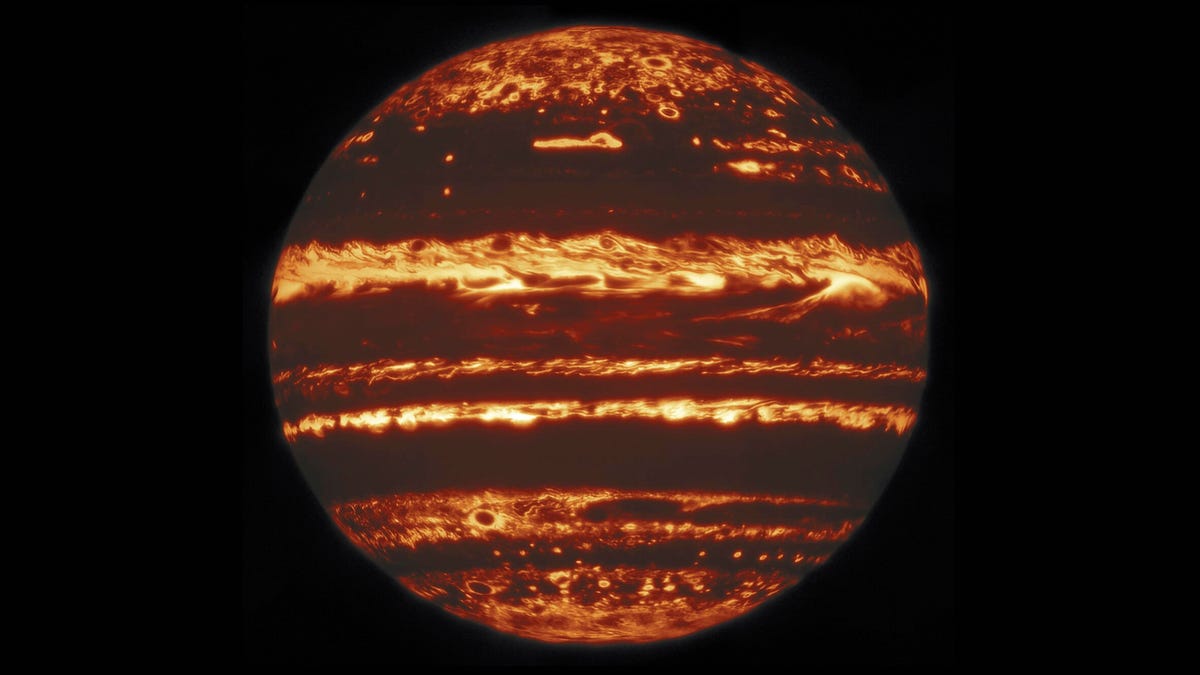Watch live as Ganymede, the solar system's biggest moon, transits Jupiter
Ganymede, Jupiter's biggest moon, is throwing shade at gas giant Jupiter -- and you can watch live.

A snapshot of Jupiter in infrared light, taken by the Gemini Observatory in May 2019.
On Friday, NASA's Infrared Telescope Facility (ITF) at the top of Mauna Kea in Hawaii will be pointed at gas giant Jupiter for a unique eclipse event: Ganymede, the solar system's largest moon, is going to cast a shadow on Jupiter's shiny, yellowed face. And you can watch a livestream of the event right here.
Thanks to a collaboration between the Royal Astronomical Society and the University of Leicester in the UK, the ITF will be pointed at Jupiter, studying the planet in infrared as Ganymede's shadow slides across its face. Ganymede is not just any old moon. It's the ninth-largest world in the solar system overall -- even bigger than the planet Mercury . It was discovered in 1610 by Galileo. For over an hour, the shadow of Ganymede will pass over Jupiter's surface -- and the infrared facility will be watching.
But the stream isn't just for observation's sake. Two astronomers from the University of Leicester, Tom Stallard and Henrik Melin, will be on hand to describe some of the science driving the event, studying how Ganymede's eclipse affects Jupiter's upper atmosphere. How does it change in the dark and what can it tell us about Jupiter's night side?
The event kicks off at 3 a.m. PT for those of you on the US West Coast (6 a.m. ET), but we're all in lockdown and what even is time anymore? If you're up and keen to watch, we've embedded the YouTube link below.
If you miss out on Ganymede's shadowy voyage but still want to do some planet viewing this week, we've got you covered. On Sunday, July 19, five planets will be visible in the night sky without a telescope -- including Jupiter. You can catch Mercury, Venus, Mars, Jupiter and Saturn, and the moon all lining up neatly across our horizon.
And if that's not enough? Don't forget Neowise, the brightest comet in 20 years is currently dazzling astronomers across the world. It's prime time to catch a glimpse -- and we've loaded up a guide with tips if you want to photograph the space rock, which won't be visiting us for another 7,000 years.
If you can't keep up with all of that, be sure to check out CNET's Space Calendar, which you can sync with your own Google Calendar to stay up to date with the latest in rocket launches, meteor showers and more.

